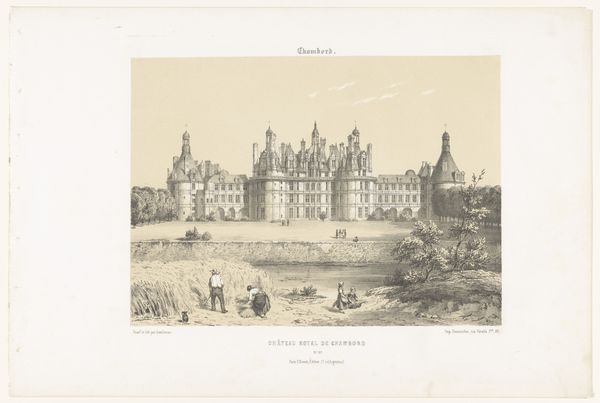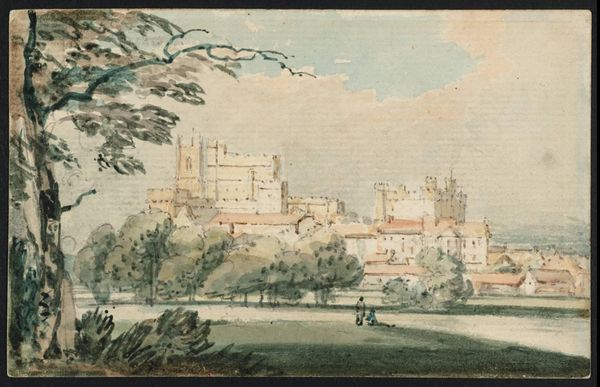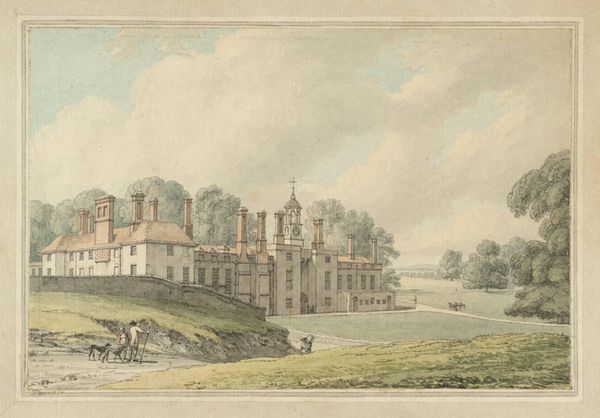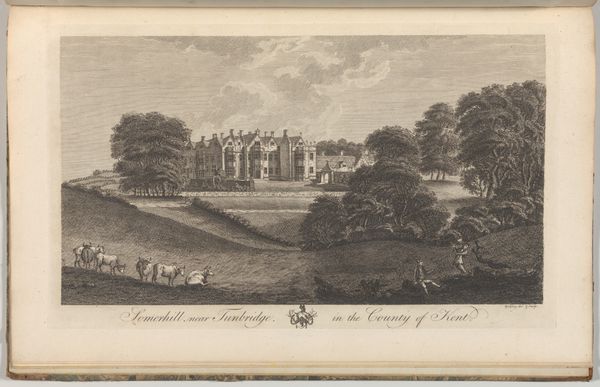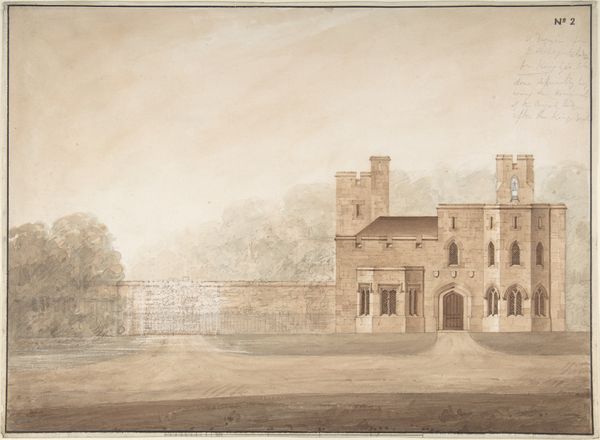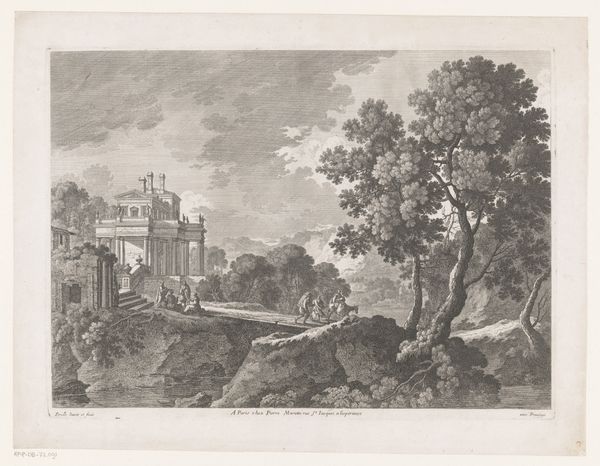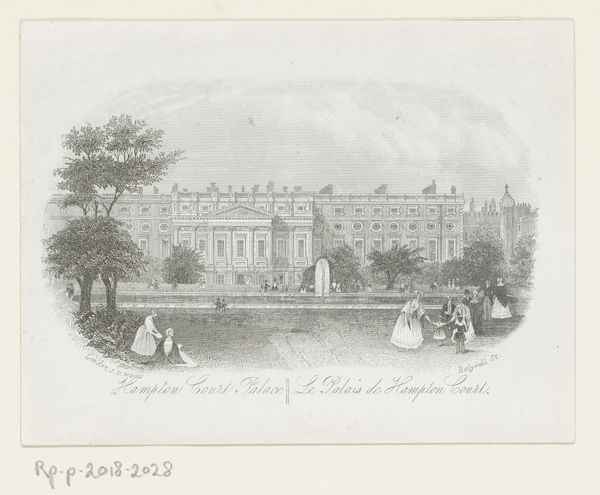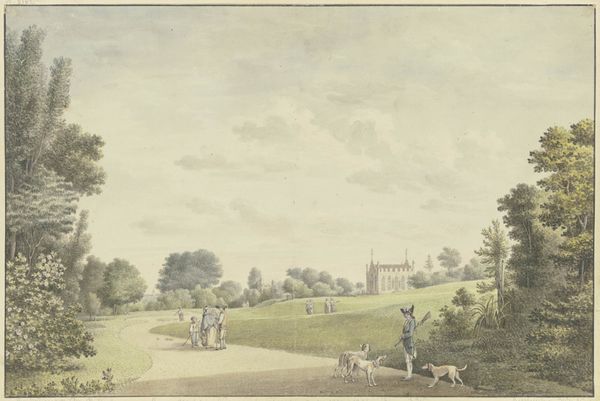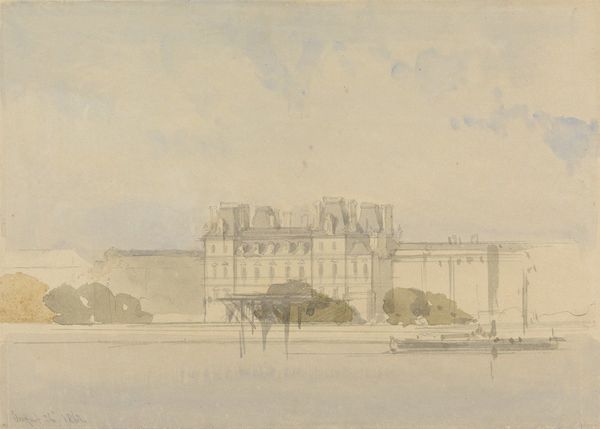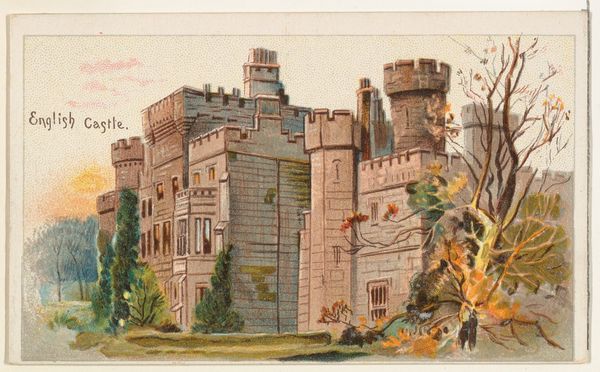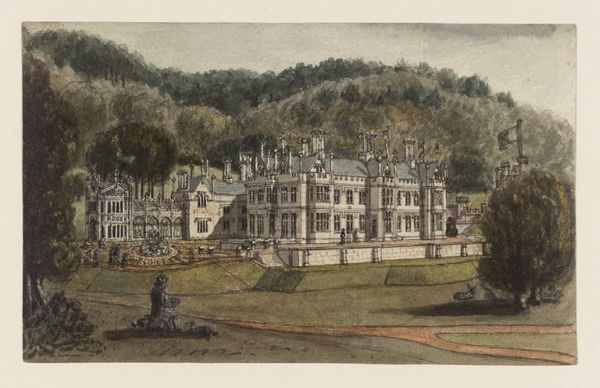
The Château of Chambord Seen from the Southwest 1740 - 1778
0:00
0:00
drawing, print, plein-air, watercolor
#
drawing
# print
#
plein-air
#
landscape
#
watercolor
#
coloured pencil
#
france
#
men
#
cityscape
#
watercolor
#
rococo
Dimensions: 9 3/16 x 14 3/8 in. (23.4 x 36.5 cm.)
Copyright: Public Domain
Curator: This is Simon Mathurin Lantara's "The Château of Chambord Seen from the Southwest," likely created sometime between 1740 and 1778. It's a watercolor drawing, a medium often associated with preparatory sketches, but also valued for its own unique aesthetic qualities. Editor: My first impression is of an idyllic, almost pastoral scene. The monumentality of the château is softened by the surrounding greenery and the laborers in the foreground. It’s remarkably delicate. Curator: Exactly. Lantara, though somewhat obscure, captured the château during a period of shifting aristocratic tastes, and his landscapes appealed to a public increasingly interested in naturalism and informal portrayals. Editor: Yes, you can really see how the Rococo style is moving toward an appreciation for, and almost romanticizing of, rural labor. It feels different from grand depictions that glorify courtly life; even the watercolor suggests a fleeting glimpse. It seems lighter somehow, the production and means. Curator: True, it's not about formal portraiture or allegorical scenes. The presence of working men invites us to consider the economic underpinnings that supported the aristocracy, now brought closer to the subject through Lantara's compositional decisions. We're seeing the château through the lens of those who maintained the grounds. Editor: And it's important to remember how watercolours themselves worked in society at the time. Its ease of transport lent itself to outdoor settings—allowing more of-the-moment creations, even as landscape gradually shifted in its role. Curator: It’s easy to overlook how revolutionary this was. Images had specific purposes, particularly in a court setting, and in its way, the material realities in this painting are almost… democratic. The architecture is part of a working landscape instead of divorced. Editor: It's intriguing to consider how Lantara’s choice of watercolour played into that. Unlike the more labor-intensive mediums like oils, it implies immediacy, a sort of casualness. It allowed people at the time and it allows us now to experience Chambord as an actual site in constant processes of becoming. Curator: Looking at Lantara’s rendition encourages me to consider the politics and material conditions necessary to the functioning of the early modern estate. It asks us to question, whose stories have traditionally been highlighted, and which remain largely unseen in canonical tellings? Editor: I see Lantara highlighting materials that aren't just for a refined end. It offers a perspective of what a great landscape, as a production itself, could achieve for the period, challenging hierarchies by merging work, place, and representation, through method and outcome.
Comments
No comments
Be the first to comment and join the conversation on the ultimate creative platform.
